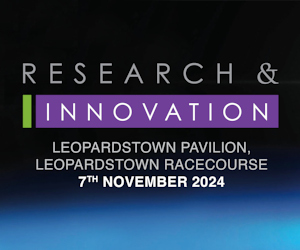CIT Engineer Looks to Get Systems Talking

Electronic engineer Dr Susan Rea is part of a team that is bringing researchers and control systems together at the Nimbus Centre in Cork Institute of Technology.
Sometimes simple ideas can stand to make a difference. What if data centres could balance energy loads smartly across servers? What if they could use energy from renewable sources? And what if you could put the excess heat generated by the data centre servers to good use?
It sounds easy, but the challenge can lie in getting the various elements to talk to each other, and electronic engineer Dr Susan Rea is on the case. Based at Cork Institute of Technology, she is working as part of an EU project team that aims to bring various researchers and the systems they work on together.
Managing data centre energy
One of the team’s current missions is to get energy, cooling and computing systems to work in better harmony in data centres, which can hog power and emit large amounts of waste heat. The EU-funded GENiC (Globally Optimised Energy Efficient Data Centres) project, which is led by CIT, is looking to integrate these elements more efficiently.
“In a data centre, typically the thermal management – the cooling – and the IT load management are managed separately,” explains Rea, a project manager at Nimbus Centre for Embedded Systems Research at CIT. “Traditionally, their management would involve very different skill sets and be separate businesses.”
GENiC, which is funded under the FP7 programme, involves numerous partners, including University College Cork, United Technologies Research Center in Cork, IBM Research Labs Zurich, ATOS and Acciona from Spain.
Balance the load
One focus is to balance the computing load on the servers, so that a small number of servers can run at full tilt rather than having all the servers active at a lower capacity, explains Rea. This would also mean being able to direct the cooling to the area of the data centre that needs it.
And, speaking of heat, data centres can produce a lot of it as excess or waste heat, she adds. “Even with your laptop, you know the amount of heat that will produce. So if you have a data centre chugging away then it is going to produce a significant amount of heat, and we are looking to recover that, to capture waste heat that could then be used perhaps to heat adjacent spaces, such as offices or swimming pools, for example.”
Project partner Acciona is also looking to tilt the balance towards renewable energy as a source of power for data centres. “They are trying to see what capacity from renewables you could deliver into the data centre in terms of its power requirement,” explains Rea.
As the three-year GENiC project develops its solutions, the researchers will put their management framework and software to the test at an experimental data centre in CIT, which offers something of a sandpit to see how the new approaches run in practice.
“We will be trialling the thermal and IT load management solutions, and we will simulate the renewable energy aspect,” says Rea. “And ultimately we hope to have a model that companies can apply to be greener and to save money.”
Encouraging talk
It’s not just data centres that can benefit from systems talking to each other more openly. Rea is also involved in developing better wireless embedded communications systems and she works on the SCUBA project, which seeks to integrate building automation systems.
“Again we are working with systems that traditionally would have been managed separately and trying to get them to ‘talk’ to each other,” she explains. “You want to look at managing the control, the heating, the lighting, in order to save energy. For example, there’s no point in having the lights or heating on in a part of the building when no one is actually there. So we want to put a framework around these systems that allows them to communicate and then use that information to make a decision based on all of the systems rather than individually.”
Always learning
Rea trained as an electronic engineer in CIT, where she did her undergraduate and PhD, but much of her day-to-day work now involves project management, and she has learned new skills along the way.
“There’s a lot of administration and financial management, and that combined with the diversity of the projects themselves means you are continually learning,” she says. “You develop new skills, and the nice thing about being in Nimbus and working with the team there (led by Dr Dirk Pesch, who heads the Nimbus Centre and leads GENiC and SCUBA) is that you are given the time and the opportunity to develop into these types of roles.”
Be pro-active
Becoming an engineer was something of an unusual step for a girl when Rea was in school, she recalls, and she has worked with transition-year students to encourage them to be aware of the opportunities that engineering offers.
“Sometimes if students like maths they may feel they have to study pure maths at college, but any of the engineering courses will challenge you from a mathematical perspective,” she says. “And I always encourage school students to pull out the college prospectus, check out the options on the internet, visit the open days. Most of the colleges are very happy to engage with students, even on a one-to-one basis. Be pro-active – when you are 16 or 17 even if you don’t know what you want to do, have a look at them all.”








There are no comments at the moment, do you want to add one?
Write a comment